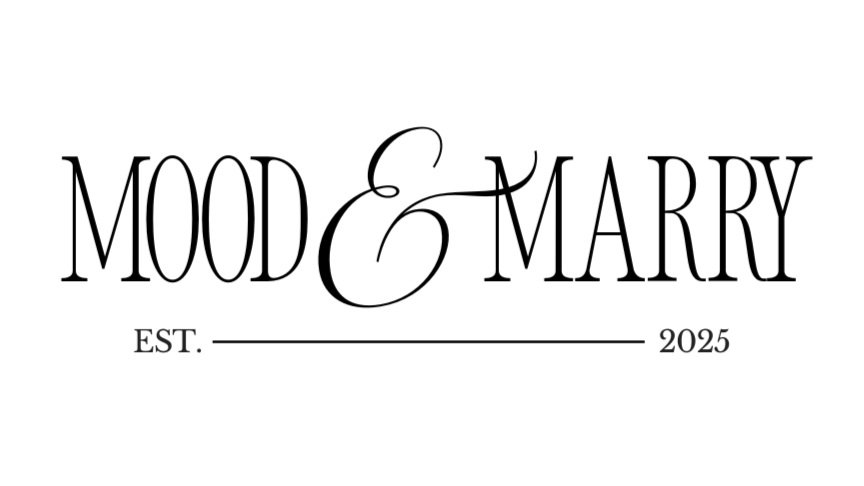Wedding Planner vs. Mood & Marry Design vs. Day-of Coordinator: What’s the Difference—and Which Do You Need?
When it comes to planning your wedding, the roles and titles can get confusing fast. Do you need a planner? What’s a day-of coordinator? Can a template actually replace a full-service wedding designer?
Let’s break it all down so you know exactly what each role does—and how combining a Mood & Marry design with a Day-of Coordinator might be the smartest, most budget-friendly way to plan a beautiful, stress-free wedding.
Option 1: Full-Service Wedding Planner
What they do:
A full-service wedding planner manages every detail from start to finish. They help you find vendors, build timelines, manage contracts, attend meetings, and often coordinate on the wedding day, too.
Pros:
Handles logistics and big-picture planning
Usually includes design services or referrals
Great for busy couples or destination weddings
Cons:
Expensive—expect to spend $8,000 to $15,000+
You may not have as much creative control
Not all planners are strong in design
Best for: Couples with demanding jobs, complex logistics, or no time to manage planning themselves.
Option 2: Mood & Marry Wedding Design Template
What we do:
Mood & Marry gives you the creative direction of a high-end wedding designer—without the custom price tag. You choose a professionally curated design template that includes:
A complete wedding moodboard
Editable Canva files
Vendor brief pages for florals, rentals, signage, and more
You handle the communication and vendor hiring—but with a clear, beautifully designed plan in hand.
Pros:
Professional-level wedding design for a fraction of the cost
Helps you clearly communicate with vendors
Easy to edit and hand off
Cons:
Doesn’t manage logistics, contracts, or scheduling
You’re still the main point of contact with vendors
Best for: Design-savvy or organized brides who want a cohesive look without hiring a $10K planner.
Option 3: Day-of Coordinator (aka Month-of / Wedding Manager)
What they do:
A day-of coordinator steps in closer to the wedding date to manage logistics, vendor arrival times, timelines, and make sure everything runs smoothly.
Pros:
Affordable (typically $1,000–$2,500)
Takes pressure off you on the actual day
Works well when paired with a strong design plan (like Mood & Marry)
Cons:
Doesn’t help much with early-stage planning or creative direction
Some only work with couples who’ve already booked vendors
Best for: Brides who want to handle the design and planning, but don’t want to manage the day-of details themselves.
The Best Combo? Mood & Marry Design + Day-of Coordinator
Here’s the strategy we recommend:
✔️ Use a Mood & Marry template to define your vision, brief your vendors, and stay organized
✔️ Hire a day-of coordinator to execute the plan and handle logistics
✔️ Save $8,000–$10,000 by skipping a full-service planner and still have a wedding that looks like it was styled by a pro
It’s the smart, beautiful middle ground between full DIY and full planner.
The Takeaway
You don’t need to spend five figures to have a wedding that looks professionally planned. You just need clear direction, smart tools, and the right people in the right roles.
Mood & Marry is your creative director. Your coordinator is your execution lead. You’re the visionary.
